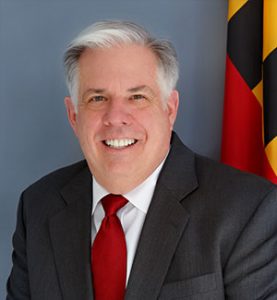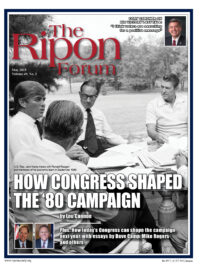 Why tax reform may be the key to success
Why tax reform may be the key to success
Republican governors elected on platforms of economic growth through tax reform are running the economies of three traditionally blue states. Can Illinois Governor Bruce Rauner, Massachusetts Governor Charlie Baker, and Maryland Governor Larry Hogan deliver on their promises?
The economies that the governors inherited were stagnating. In addition to budget shortfalls and long-term problems from unfunded pension liabilities, Illinois, Maryland, and Massachusetts all had lower GDP growth than the U.S. average in 2014. In the newly-released American Legislative Exchange Council report Rich States, Poor States, Massachusetts is ranked 35 in the Economic Performance Rank (1 is best and 50 is worst). Maryland receives a ranking of 31, and Illinois is only ahead of 4 other states at 46.
These findings are echoed by the non-partisan Tax Foundation’s 2015 State Business Tax Climate Index. The index evaluates states’ business climates based solely on tax variables, and reveals a similar picture of Massachusetts, Illinois, and Maryland, which all have below-average rankings of 24, 31, and 40, respectively.
Lowering tax rates would help spur the states’ economies, which is a necessary step for states to shore up their finances. Lower rates deliver better results than provisions that benefit individual, often politically-connected, industries or companies. Government bureaucrats and politicians are simply incapable of correctly picking winners and losers through grants and special tax treatment, and doing so does not lead to sustainable growth.
Let’s look at each state.
 Illinois: Picking winners and losers is done through carve-outs, where tax exemptions or credits are given to specific industries or businesses. Illinois has been notorious for handing out generous tax breaks to specific corporations. Tax breaks passed out in 2011 to just two companies, Sears Holding Corp. and CME Group Inc., cost the state over $330 million a year. Illinois policymakers justified the handout by claiming that major companies would leave if they were not given a deal. However, any tax carve-out reduces the tax base, which requires an unfair increase of the tax rate for everyone else in order to maintain consistent revenue for the state. It is far better for states to lower their rates and allow for an equal playing field.
Illinois: Picking winners and losers is done through carve-outs, where tax exemptions or credits are given to specific industries or businesses. Illinois has been notorious for handing out generous tax breaks to specific corporations. Tax breaks passed out in 2011 to just two companies, Sears Holding Corp. and CME Group Inc., cost the state over $330 million a year. Illinois policymakers justified the handout by claiming that major companies would leave if they were not given a deal. However, any tax carve-out reduces the tax base, which requires an unfair increase of the tax rate for everyone else in order to maintain consistent revenue for the state. It is far better for states to lower their rates and allow for an equal playing field.
Residents and businesses in Illinois are getting a break in 2015, since temporary tax increases passed in 2011 partially sunset. The individual rate dropped from 5 percent to 3.75 percent, and the corporate rate fell from 9.5 percent to 7.75 percent. Rauner’s predecessor and election opponent Pat Quinn (D) pushed the Illinois legislature to make the temporary increases permanent because of the substantial deficits faced by the state, which are caused by runaway spending.
 Massachusetts: Massachusetts foregoes nearly $14 billion in tax revenues due to individual income tax credits. These tax carve-outs comprise 23 percent of the state budget. More revenue is lost through tax credits for specific favored industries, such as film. A small tax base, high tax rate environment is a disincentive for entrepreneurship and business development and hampers economic growth.
Massachusetts: Massachusetts foregoes nearly $14 billion in tax revenues due to individual income tax credits. These tax carve-outs comprise 23 percent of the state budget. More revenue is lost through tax credits for specific favored industries, such as film. A small tax base, high tax rate environment is a disincentive for entrepreneurship and business development and hampers economic growth.
Property tax burdens in Massachusetts are the 6th highest in the nation. Removing tax carve-outs, such as those for solar and wind power, would allow Governor Baker to make Massachusetts’s property taxes more competitive with other states’ rates, possibly reversing the trend of net income leaving Massachusetts from when residents move to other states, which exceeded $10 billion from 2000 to 2010 (the latest data available).
 Maryland: In Maryland, Governor Hogan needs to focus on lowering the state’s individual income tax rates, the 45th most burdensome in the United States. Doing so would benefit many more residents than creating additional carve-outs. From 2000 to 2010, Maryland lost net income totaling $5.5 billion from residents moving to other states, including $3 billion to income tax-free Florida.
Maryland: In Maryland, Governor Hogan needs to focus on lowering the state’s individual income tax rates, the 45th most burdensome in the United States. Doing so would benefit many more residents than creating additional carve-outs. From 2000 to 2010, Maryland lost net income totaling $5.5 billion from residents moving to other states, including $3 billion to income tax-free Florida.
Maryland’s previous governor, Martin O’Malley (D), was notorious for increasing taxes. He raised tax rates on everything from personal and corporate income, to sales, cigarettes, alcohol, and gasoline. He also created a “rain tax” that is assessed to property owners based on the amount of “impervious” surfaces on their land, such as rooftops and driveways. Maryland voters rejected this approach, and overwhelmingly chose Hogan over O’Malley’s hand-picked successor, Anthony Brown.
Rauner, Hogan, and Baker were all elected to restore sanity to their states’ tax codes. To succeed, the new governors must focus their attention on eliminating tax carve-outs and promoting simple, neutral tax systems, with rates levied across a broad base at lower rates. This, combined with targeted spending cuts, would go a long way towards improving the states’ troubled budgets. If the first-term governors can succeed in tax reform, all three states will improve their economic rankings, and the stage will be set for long-term economic growth.
Jared Meyer is a fellow at the Manhattan Institute for Policy Research. He is coauthor of the book Disinherited: How Washington Is Betraying America’s Young. You can follow him on Twitter @JaredMeyer10.




